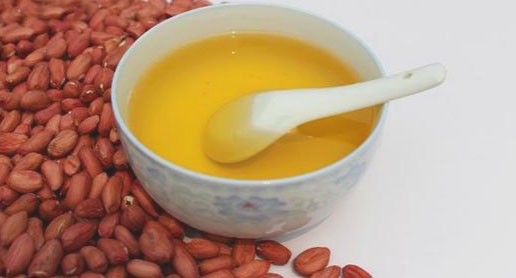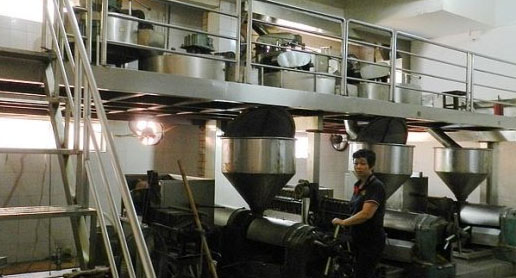Peanut oil press and peanut oil pressing technology
Peanut oil is one of the most commonly used cooking oils in the world. Peanut kernels contain around 40-50% oil and are often extracted through pressing. Due to the high oil content and soft nature of peanut kernel, prepressing – extraction or double pressing method is often used. However, before this process can take place, the kernels must undergo a series of steps to ensure their quality.

Peanut Oil Pressing Technology
Shelling and Kernel Shell Separation
The first step in the peanut oil pressing process is shelling and kernel shell separation. The objective of this step is to remove the shells from the kernels and ensure that the kernel content in the shell is lower than 0.5%. Currently, knife cage shelling and kernel shell separation equipment are used for this purpose.
Softening, Flaking, and Cooking
After shelling and kernel shell separation, the next step is to soften, flake, and cook the kernels. Peanut kernels have a soft texture and generally do not need to be softened. However, sometimes they need to be flaked after proper heat treatment to adjust moisture. The flake thickness should be less than 0.5mm when being used for hot pressing to prevent sticking of roller in flaking process.
Cooking is adjusted according to the extract conditions of hot pressing (with 1-2% of moisture and temperature about 130°C). Flake of slightly oily with the color of dark yellow is preferred. Increase the moisture (about 4%) and lower the temperature (107-121°C) appropriately in prepressing to reduce the rate of protein denaturation.
Single Pressing Method
The single pressing method is used in peanut oil pressing to extract oil from the kernels. The actual compression ratio of pressed material is 4-4.5, which is larger than soybean obviously, so the compression ratio should be 10 or so when using the screw oil press. The oil discharge gap of the press cage should be broadened and lengthened appropriately, and the inner diameter of pressing chamber should not be too large. The pressing bolt shaft structure must be beneficial to the axial thrust, strictly prevent bonding or rotation of flakes along with the axis when pressing. Cakes can be mixed in pressing when necessary in order to improve the pressure of pressing chamber.

Double Pressing Method
In the double pressing process, different devices (hydraulic machine or screw press) can be used. Only 76-78% of oil is considered to be extracted in the first pressing to make the residual oil in the cake after second pressing up to 12-14%. The cake after secondary pressing can also be extracted by solvent extraction again or used as feed. However, most factories use single prepressing to make the residual oil dropped to 12-14%.
Peanut Oil Cold Pressing Process
Peanut meal contains high protein content without antinutritional factors, thus it is a good protein resource. But the high temperature in ordinary peanut prepressing extraction process and production process of superfine fragrant peanut oil would cause overheating denaturation of peanut protein and make its nutritional value as feed reduced greatly due to the loss of effective amino acids in peanut protein although the protein content in peanut meal is high. At the same time, overheating denaturation of protein makes its functionality used as edible protein significantly reduced and the color is deep, thus it cannot be applied in the food industry. This would not only lead to the waste of valuable high-quality oil on peanut protein resources but also greatly reduces the added value of peanut oil production.
Peanut oil cold pressing technology takes high quality fresh peanut as the raw material through drying (moisture content of 4% – 5%), red skin removing (removal rate of more than 98%), crushing and conditioning before low temperature cold pressing (residual oil is below 7% after twice pressing, the cake outlet temperature is not more than 80°C). National standard first-class peanut oil can be obtained after removing impurities in pressed crude oil through cold filter.
Peanut Protein Extraction Process
The advancement in peanut protein extraction has led to the need for further processing of the kernel after shelling and separation. Drying and peeling are essential steps in the process. Additionally, the peanut skin, commonly referred to as “red skin,” contains approximately 2.5 to 3.5% content and is considered a by-product used in medicine. This development highlights the importance of maximizing the use of all components of the peanut to reduce waste and increase efficiency in the production process.

